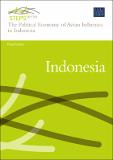| dc.description.abstract | Why is the response to H5N1 highly pathogenic avian influenza (HPAI) so challenged in Indonesia? Why did the virus spread so fast, and why has the disease persisted? Are there features of the country and its culture that encourage or inhibit the disease? Is the internationally led response appropriately sensitive to local contexts? This paper suggests that distinctive social, cultural, economic and political factors work against a technocratic response such as has been employed in Indonesia. The paper explores the interactions between global bio-medicine, a mesh of power relations linking health, industry, institutionalism and governance, and Indonesia’s diverse and complex political and social contexts. How is an infectious zoonotic disease controlled in a dynamic environment where modernist models of authority and rationality are unproven?
Since H5N1 was first detected in central Java in mid-2003, it has spread to 31 of Indonesia’s 33 provinces, caused the death or destruction of at least 150 million poultry birds, and killed over 110 humans. The international response, which began in mid-2005, has focused on animal surveillance, control and vaccination, human health system capacity building, and information and behaviour change communications. The response is challenged by the size, geography and infrastructure of the country, an exuberant democracy and extensive decentralization. Other diseases, sectarian tensions and regular natural disasters overshadow the threat of HPAI to human health and food security. Nevertheless, issues of trust between science, government, business and civil society, and nationalism, are shown to be key, as are the varying constructions of risk, public goods and governance associated with the international organizations driving the response, and the people affected by the disease. | en |


